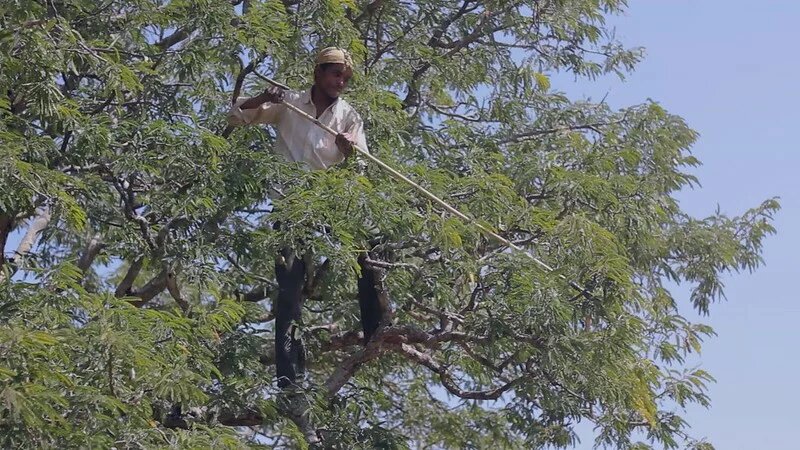
Countering the poverty of ideology with a plurality of worldviews

One and Many
My core concern here is to wrestle with the idea of ‘nature’ and with the ‘ways in which we relate to it ’– a nature that is both in us as humans and the many nature(s), animate and inanimate, outside of us. I argue that in order to combat the existential threats we face as a society and as a planet, it is time to go back in some ways and go forward in others. Go back to the beliefs and worldviews that have guided communities who have lived with nature in harmonious ways for centuries, if not millennia. And to go forward with dismantling capitalism that many critical scholars (not least of which is Marx from the 1800s!) have been demanding. I call for a rejection of the homogenising tendencies of capitalism that reduces natures (including humans) to the category of a resource, whose main goal then becomes serving capitalism’s profiteering logic. Rather, I argue for a recognition of the plurality of natures and of the ways in which it is possible to live – with and in – them.
But first I give a brief context about the current moment we find ourselves in.
The crisis in and of the Anthropocene
Some readers may already be aware of the dire times we live in. Nevertheless, I present two recent statistics that can put into context the dismal state we, as a society, are in today. The recently published Living Planet Report – produced jointly by the World Wildlife Federation and Zoological Society of London – that tracks the health and abundance of different plants and animal species globally, estimates that since 1970 there has been a 69 per cent decline in the populations of 5,000+ species. As you make sense of that figure (or loss), here’s another disquieting statistic: The World Inequality Report 2022 finds that despite so-called ‘progress’ we are as unequal as a society as we were a century ago. In 2020, average incomes of the world’s richest 10 per cent exceeded the average incomes of the world’s poorest 50 per cent by 38 times (in 1910 it was 41 times). This becomes even more worrisome when we consider the much larger scale at which this inequality now manifests - global population has increased by five times (1.6 billion in 1900 to 8 billion today). To state somewhat bluntly, in the past 100 years we have eroded much of our ecological base and most of us aren’t richer (or happier) from it. We are an impoverished society literally, if not also metaphorically.
Given this situation, for many concerned with the dangerous consequences of such intertwined crises, the task at hand is to rehabilitate humanity’s broken relationship to other-than-human-natures. Not all, however, agree on the way in which this rehabilitation must be carried out. Below is a brief summary of the current contestation between different thinkers and practitioners over what rehabilitation pathways to take.
Many neoliberal advocates believe that expanding markets to include hitherto unpriced parts of nature can save the day (e.g., marketing tropical forests as carbon sinks). The idea can be summarised in McAfee's (1999, 134) famous (critical) articulation of this logic: “Selling Nature to Save it”. This thinking has for some time now also permeated the hallways of big international organisations such as the United Nations that govern policy responses to climate and other ecological crises. Opposing such neoliberal logic, however, are the anti-capitalists who say it is high time that the ‘free’ market be seen for what it is: A force that is neither free nor rational, having long been manipulated by a few groups to serve their own vested interests, often to the detriment of other humans and nature. Capitalism, for these anti-capitalist scholars, must be dismantled and replaced with local, direct and communal forms of natural resource governance, what some term as radical ecological democracy. Such local governance systems should go hand-in-hand with a reduction in consumption, especially in the ‘over-developed’ West (e.g., proposals such as Degrowth, Convivialism) and a rapid cut-off from fossil fuels and from other extractive and carbon-intensive modes of needs-provisioning.
Somewhere along this spectrum of neoliberal enthusiasts and their anti-capitalist critics, lie ‘eco-modernists’ who believe that human ingenuity is boundless and that technological innovation will save us. As a final mention here, there are also scholars -loosely bracketed as post-humanists and/or new conservationists- who believe it is best to embrace the current state of (human) changed natures and that things e.g., the CO2 molecule have an agency we cannot discount. The more general refrain coming from these and eco-modernist quarters is this: Nature is what we make it out to be and managing it to serve human development (defined in very narrow, modern terms) is technologically feasible.
Nature’s nature
Much of the above contestation around what solutions can save us in the crisis ridden Anthropocene rests on another, and yet more fundamental, conundrum that can be simply articulated as:
What is nature?
Pithy texts dating back to ancient societies have battled with the idea of nature. We are part of nature but still separate. What separates us? We depend on nature for everything but we still seem to be independent from it, in a way no other species is. Today virtual reality provides an outlet into worlds that seem completely disjointed from the real, material nature that surrounds us. At the same time, the increasingly degraded state of material nature means that our very existence as a species (including that of countless other species) is threatened.
But here’s a fantastical thought experiment some (scholars, policy makers etc.) like to engage in: If we humans are part of nature, maybe this (crisis) state of affairs was deemed to be. Capitalism was inevitable since it is premised on rational self-interest and competition – a very human thing?! Admittedly, with global warming and the sixth mass-extinction, direct outcomes of capitalism’s need for relentless extraction and accumulation, something has gone a tad bit wrong. However, all can be sorted out by reforming capitalism to make it less aggressive, accumulative and by relying on (the infinite potential of) technology. That’ll make sure I still get my new iPad while saving the polar bears.
Such social-constructivist and neo-capitalist nonsense often comes from those who have benefited from the capitalist status quo. This I ask to be rejected and instead present to readers a radical perspective that takes into account the root causes of the crisis we are in and, in reckoning with those causes, we can help lay the foundation for a more ‘human(e)’ world. In doing this, I take recourse to two strands of thought: a) Marxism/ eco-socialism and, b) Worldviews and philosophies that guide multiple indigenous communities.
Marxism and the lesson on metabolic rifts
Embedded within this radical perspective is an idea of Nature that is distinct from what it has come to mean within capitalism. Nature is not merely a ‘resource’ for capitalist expansion, nor a source of exchange-values (think money). Additionally, and importantly, it is not something ‘out there’ separate from us! Many Marxists emphasise the essential interdependence that exists between humans and other-than-human-natures. Human activity– in its use of nature- must not overshoot the boundaries prescribed by nature’s metabolic rates (what Marx called the ‘universal metabolism of nature’). What this means is that while humans constantly transform certain aspects of nature to meet their needs (& increasingly desires), they must do so in accordance with nature’s metabolic capacities. If they systematically disregard this and produce and consume at unsustainable rates, a rupture, or rift, occurs in this universal metabolism. ‘Metabolic rift’ – a term Marx first used in this context – arises when nature is extracted at rates that do not account for its regenerative capacity. Today, we see manifestations of this metabolic rift across multiple ecological domains. Fossil fuel extraction and industrial overproduction have led to global warming, of which ocean acidification is one problem among many. We have overharvested fish, forests and soils and have overshot most of the planetary boundaries that keep humanity within a safe operating space.
This dire state then calls for more deliberation on humanity’s place in nature. Taking further cue from Marx, it seems analytically appropriate (and timely) to subscribe to a dialectical materialistic understanding of nature: Nature and society are neither separate (dualism) nor the same thing (monism) but are instead taken to be in a dialectical relationship. They need to be treated as separate analytical categories but as made of the same material substance. Of important consequence is how they interact with each other and what emerges from those interactions. This can clarify for us what kinds of remedial actions could address the urgent environmental problems we face.
To simplify and make visceral this understanding of nature-society relations for readers, below I quote from Andreas Malm (2018)’s book titled ‘Progress of the Strom’ – essential reading for those interested in how radical theory can serve us in a warming world. Malm is a Marxist theorist, anti-fossil-fuel and anti-fascist advocate and he asks us to:
“Picture a tree. It grows out of the soil, draws nourishment from it, expires the moment it is cut off from it: yet it cannot be reduced to it. Nature is soil for society, the fold out of which it grew and the envelope it can never break out of, but just as a tree can be told from its soil, society can be differentiated from nature, because it has shot up from the ground and branched off in untold directions over the course of what we refer to as history” (58, emphasis in original).
I hope this simplified visualisation of how humanity and society relate to each other seems reasonable. If so, then we can arrive at the following theses:
- Nature has agency of its own, but political agency of the kind that can organise and strategize about how to use nature’s agency is humanity’s prerogative alone.
- It is clear that certain ways of meeting human needs have more detrimental impacts on nature than others.
- The ongoing poly-crisis suggest that something is surely amiss – if not grossly flawed – with the dominant (capitalist) form of needs-provisioning not least the idea of ‘development’ it subscribes to.
- Consequently, in order to avert the trajectory of this crises, we have to dramatically course correct, reject and replace capitalist forms of needs-provisioning.
- One way of doing this could be to take heed from communities who have been meeting their needs and living meaningful lives without destroying surrounding natures and without resorting to capitalism’s exploitative and expropriative logics.
This is the matter to which we now turn.
Learning from other worlds
Inspiration for non-exploitative relationships with nature can come from the ways many local and/ or indigenous groups have visualised nature and their own place within it. By listening to and knowing how surrounding nature(s) evolve – a knowledge that comes from inhabiting these spaces for centuries – many indigenes have met their material and non-material needs without causing irreversible damage to these same natures. Their own metabolic needs seem to be in sync with the metabolic capacities of nature so that it becomes possible to meet needs over the long-term. This has often required some other-worldly thinking and practice. I take some examples of this below.
For many forest-dwelling communities, the forest is not only a place to collect everyday items of need – e.g., food and medicines – but also a sacred space where spirits of ancestors and/ or Gods roam. Certain species are designated as totems, or treated like kin and so never to be harmed as that may be equivalent to harming humans. Ambika Aiyadurai's (2021) book “Tigers are our Brothers” discusses the prevalence of such notions in the case of indigenous communities in India’s North East.
Some indigenes also believe that totems hold supernatural powers. Harming them can lead to being cursed – e.g., crops may fail, disease or death may unfold. Such misfortune could also come if certain members of the community extract more from surrounding natures than is their fair share, as Barry and Bonnie Hewlett found. They were one of the first anthropologists to investigate the Ebola outbreaks in West Africa. For many local people, Ebola (the locals called it Ezanga) was caused by “bad (human-like) spirits” to people and groups “who accumulated things and do not share” (Hewlett and Hewlett 2008, 6). This meant that it was gold miners and lumber company workers who were at high risk of getting Ebola.
For some in the modern world such explanations would be termed unscientific and backward. Science tells us that Ebola is a viral zoonotic disease caused by coming into contact with bodily fluids of infected forest animals, with bats being the original hosts of the virus. In fact, COVID-19 has a similar causal story. Not discounting these scientific discoveries – or models of explanation – local communities have what anthropologists call “cultural models” that capture “people’s knowledge and feelings from a particular domain” (ibid., 6). In the case of Ebola, lumber company workers were at risk of catching viruses typically hosted by wild bats since these workers were at the frontier of these wild habitats – opening, disturbing and fragmenting them through deforestation. In this way, we see that local understandings and modern science reinforce and complement each other.
Locally relevant knowledges, of which there are many among indigenous traditions, thus need to be integrated with lessons learnt from laboratory science when understanding and responding to current socio-ecological problems. Both forms of knowledge are relevant as social scientists, especially anthropologists, have increasingly argued. As a final example of the importance of local knowledges, latest spatial analyses reveal how indigenous peoples and local communities (IPLCs) conserve at least 22 per cent of the world’s Key Biodiversity Areas (ICCA Consortium 2021, 11,https://report.territoriesoflife.org/). Given their intimate relationships with natures, IPLCs have not unlearnt the lesson of humanity and nature’s deep inter-dependency.
Where do we go from here?
When we think about radical transformative change (i.e. transformation from the roots), action must be taken at the inner level of the intimate self and at the outer level directed towards the social and natural world. Temporal scales also matter: We must organise to meet short-term goals (e.g., stopping any further expansion of fossil-fuel plants) and long-term goals (e.g., a complete overhaul of how society produces and consumes)
As humans, we have the unique ability to reflect on our past, to make sense of our mistakes and experiences, and to use that as a guide to create better futures. Inner transformation must make emotional self-sufficiency and flourishing its goal – and there can be many paths to that. While it is important to realise that material needs are very real (and change based on where you are and come from), the priority must be ‘need’ fulfilment. Not servicing the desire to ‘possess’ ever more that undeniably make us feel good momentarily but cannot address the emotional lacuna and social alienation we feel for different reasons - not least because we are part of a highly individualised and alienating social system! Actions in the outer world need to emerge from a healed sense of self, which inevitably comes to the realisation that “all and everything is always interconnected” (Ada Lovelace). We need collective ways of being and acting.
This is witnessed in how many small communities, both in rural and urban settings, organise themselves by developing and negotiating a shared sense of purpose. It is also witnessed in times of emergency – the COVID-19 pandemic being a recent example – when autonomous support networks emerge and solidarity is built from the understanding that suffering is universal. Greta Thunberg’s school strikes that went on to inspire millions to march for the climate is another example of the potency of human empathy and collectivisation. In India, we have seen multiple instances of the power of people’s mobilisation. The anti-farm bill protests are the latest in a vibrant history of social movements protesting top-down anti-nature, anti-people development, e.g., Narmada Bachao Andolan (1990s) and the Chipko Movement (1970s-80s).
While the forces of capital, of separation, of othering and of seeing nature as an exploitable resource may seem to reign our everyday lives, it need not be so. By taking a reflective step inwards and by stepping out into the world in solidarity with others we can begin to rehabilitate ourselves and our planet.
References
Aiyadurai, Ambika. 2021. Tigers are our brothers: Anthropology of wildlife conservation in Northeast India. Oxford University Press.
Chancel, Lucas, Thomas Piketty, Emmanuel Saez, and Gabriel Zucman. 2022. World Inequality Report 2022.
Hewlett, Barry S., and Bonnie L. Hewlett. 2008. Ebola, Culture, and Politics : The Anthropology of an emerging disease. Belmont, CA: Thomson.
ICCA Consortium. 2021. Territories of Life: 2021 Report.
Malm, Andreas. 2018. The Progress of this storm: Nature and Society in a warming World. Verso.
McAfee,Kathleen. 1999. Selling nature to save It? Biodiversity and green developmentalism. Environment and Planning D: Society and Space 17 (2): 133–54.
WWF and ZSL. 2022. Living Planet Report 2022.
Disclaimer: This article was prepared with the support of the Heinrich Böll Stiftung India. The views and analysis contained in the publication are those of the author and do not necessarily represent the views of the Heinrich Böll Stiftung/and the author's affiliated institution.




